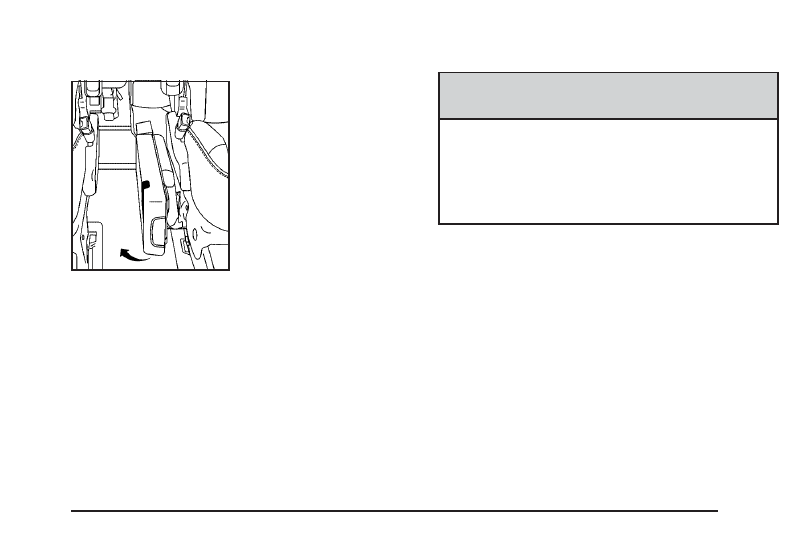Pontiac Montana SV6 (2006 year). Instruction - part 9

Folding Tray
Your vehicle may be
equipped with folding
convenience trays located
between seats. To use
each tray lift up on the
handle located on its front
end, while pulling up on the
tray to lock it into place.
There are four cupholders
on each tray.
Second Row Center Console
If your vehicle has the second row center console, use
the following procedure to remove or install the console.
Removing the Center Console
1. Locate the attachment lever in an opening on the
rear of the console
2. Pull the attachment lever upward to release the
attachment hook.
3. Lift the console up to remove it from the vehicle.
Replacing the Center Console
{
CAUTION:
A second row center console that is not locked
into place properly can move around in a
crash or sudden stop. People in the vehicle
could be injured. Be sure to lock the console
into place properly when installing it.
1. Position the second row center console above the
forward floor attachments between the second row
bucket seats.
For information on installing the seats, see Rear
Seat Operation on page 1-6.
2. Place the console’s front hooks onto the forward
floor attachments.
3. Locate the attachment lever at the rear of the
console and pull up.
4. Rock the rear attachment bracket onto the floor
attachment and release the lever.
5. Pull up on the console to ensure the rear
attachment hook is latched.
2-51